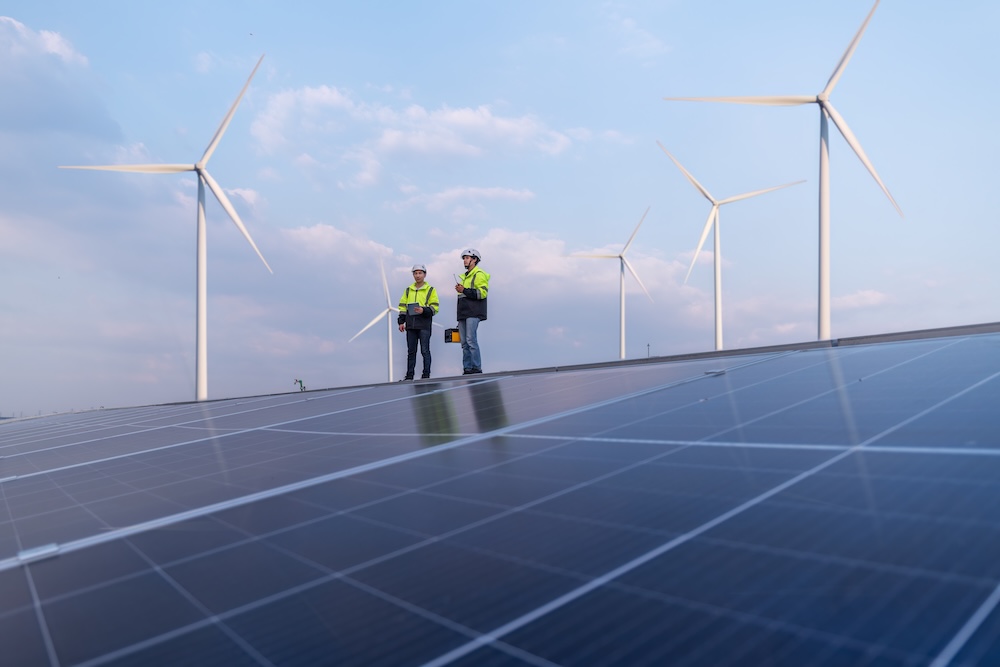As the climate crisis intensifies and fossil fuel reserves dwindle, the urgency for renewable energy has never been greater. Solar, wind, and hydro energy are no longer futuristic concepts — they are here, reshaping how the world powers homes, cities, and industries. These clean energy sources promise a sustainable future, but their expansion is not without challenges.
What Are Renewable Energy Sources?
A Definition That Matters
Renewable energy sources are those naturally replenished by Earth’s systems. Unlike coal, oil, and natural gas — which are finite, carbon-heavy, and environmentally destructive — renewables provide power with far lower emissions. Solar, wind, and hydro remain the backbone of this transition, offering scalable solutions to cut greenhouse gases and reduce global dependence on fossil fuels.
Solar Energy: Power From the Sun
How Solar Energy Works
Solar panels, or photovoltaic (PV) cells, convert sunlight into electricity. When photons hit the surface of a panel, electrons move, creating a flow of current. This electricity can power homes directly or be stored in batteries for later use.
Why Solar Energy Matters
Solar energy is abundant, clean, and increasingly affordable. The International Renewable Energy Agency (IRENA) reports that the cost of solar electricity has fallen by more than 80% in the last decade, making it one of the cheapest energy sources available. Unlike fossil fuels, it produces no greenhouse gas emissions during operation and can be deployed almost anywhere, from rooftops to deserts.
Wind Energy: Harnessing the Air
How Wind Energy is Generated
Wind turbines convert the kinetic energy of moving air into electricity. As the blades spin, they drive a generator, producing clean, renewable power.
The Benefits of Wind Energy
Wind power is one of the fastest-growing energy sectors worldwide. According to the Global Wind Energy Council, installed wind capacity could double by 2030. Wind farms can operate onshore or offshore, providing scalable solutions that rival traditional fossil fuels.
The environmental advantages are clear: wind turbines produce no direct emissions, and their cost has dropped so significantly that in many regions, wind power is now cheaper than coal.
Hydro Energy: The Flow of Sustainability
How Hydro Energy Works
Hydropower captures the force of moving water — typically through dams or river systems — to spin turbines and generate electricity.
Advantages Beyond Power
Unlike solar and wind, hydro is consistent and predictable. A dam or river system can generate electricity around the clock. Hydropower projects also support flood control, irrigation, and freshwater supply, making them multifunctional resources for communities.
A Real-World Example
DEF Hydroelectric Power, a leading company in sustainable hydro projects, demonstrates how renewable infrastructure can balance energy generation with ecosystem preservation. By using advanced monitoring systems, they ensure rivers are not overexploited while still producing clean electricity. Their projects highlight hydro’s role in moving nations closer to carbon neutrality.
Benefits of Renewable Energy Sources
Cutting Carbon and Combating Climate Change
Fossil fuels are responsible for nearly three-quarters of global carbon dioxide emissions. Renewables dramatically reduce this burden. Every megawatt of solar or wind installed directly offsets emissions that would otherwise come from burning coal or oil.
Economic Growth and Job Creation
The renewable energy sector already employs millions. From manufacturing solar panels to maintaining wind turbines, the industry is creating stable, future-focused jobs. The IRENA Renewable Energy and Jobs Review estimates employment in renewables will continue rising as governments and industries increase investment.
Energy Security and Independence
Countries dependent on fossil fuel imports face energy insecurity and volatile markets. Renewables, on the other hand, can be produced locally, strengthening resilience and reducing reliance on geopolitically unstable fuel sources.
Challenges Hindering Renewable Energy Expansion
High Initial Costs
Although long-term savings are significant, installing solar farms, offshore wind projects, or hydro plants requires heavy upfront investment. This can deter individuals and governments with limited capital. Encouragingly, financing models like green bonds and community solar initiatives are making entry more accessible.
Intermittency and Storage Needs
Solar and wind depend on weather. A cloudy day or calm wind can disrupt supply. Battery storage and green hydrogen technologies are bridging this gap, storing excess electricity to smooth out fluctuations.
Grid Integration Issues
Traditional power grids were designed for centralized fossil fuel plants, not decentralized renewable systems. Upgrading infrastructure and adopting smart-grid technologies are crucial steps in supporting a renewable-heavy energy mix.
Moving Toward Solutions
- Scale Up Investment: Governments and private investors must continue financing renewable projects at unprecedented levels.
- Advance Technology: Research in energy storage, recycling of turbine blades, and solar panel efficiency will reduce environmental footprints.
- Engage Communities: Transparent planning and local involvement ensure renewable projects serve both people and ecosystems.
- Strengthen Policy: Stronger regulations, carbon pricing, and renewable incentives can accelerate the global energy transition.
Final Thoughts
Renewable energy isn’t just an alternative — it’s the future of survival. Solar, wind, and hydro offer humanity a chance to reduce emissions, protect ecosystems, and create resilient economies. The challenges are real, but innovation, collaboration, and political will can overcome them.
As individuals, we can accelerate this shift by supporting clean energy initiatives, advocating for climate policies, and adopting renewable solutions in our daily lives. The future depends not only on technology but on our collective will to demand a cleaner, more sustainable world.









Reader Interactions